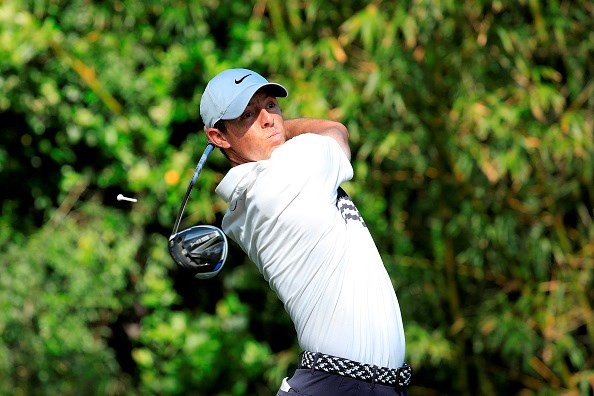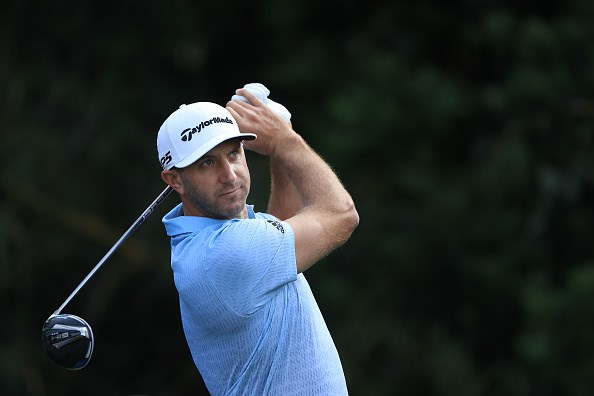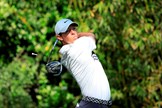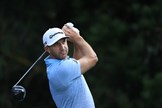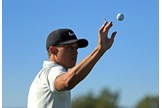Total Driving is the name of the game…
Last updated:
Once the US PGA Tour action resumes this season following the pandemic-caused layoff, fans’ eyes will naturally drift towards the players who can crush the ball off the tee.
It’s always been that way from when Sam Snead was the Tour’s longest driver of the ball, followed by big hitters like Jack Nicklaus, John Daly and today’s bashers such as Cameron Champ, Dustin Johnson, Rory McIlroy and Tony Finau.
But the ability to thump the ball miles is not the be-all-and-end-all and observers of the game would be wise to also watch where those drives land. The facts and stats prove that accuracy off the tee is joint as important as generating awesome power and distance.
Take Cameron Champ for example. He can really pound the ball – he’s known as one of the longest hitters on the PGA Tour and validated that reputation by winning the Driving Distance category during the 2018-19 PGA Tour season. Champ’s measured drives last season averaged 317.9 yards (289.86 meters).
The previous two seasons, Rory McIlory was statistically the Tour’s longest driver of the golf ball. And in 2016, J.B. Holmes led the category.
While the trio’s prodigious tee shots wowed fans as they bombed one tee shot after another, their distance domination didn’t necessarily translate into FedExCup success. Champ finished 62nd in the final FedExCup standings, McIlroy was 58th in 2017 and 13th in 2018, and Holmes ended 30th in the final standings in 2016. In fact in the 13-year history of the FedExCup, the Driving Distance champion has never gone on to win the FedExCup.
Two years after turning pro, Champ burst on the scene in 2019, winning the Sanderson Farms Championship and followed that with a win at the Safeway Open late last year. His ascension to the Tour and his victories prove he’s more than just a tee box sideshow. As he’s made his way through the professional ranks, though, Champ has learned that accuracy along with blowing his ball past his competitors counts for something, too.
“I think for me accuracy-wise with the driver, has dramtically increased, which is good,” he said prior to winning his first victory, in Mississippi. “I also kind of create some shots that are my get-in-the-fairway drives. Once you get the rounds going and get comfortable, I kind of just let it go a little bit.” In other words, Champ has realised that sometimes it’s good to sacrifice a little distance if it means he can keep his ball on the short stuff…
Bringing the Driving Accuracy category into the equation helps shed light on the need for both accuracy and length relating to overall success. But, again, success in one area without the emulating in the other seems to be problematic: since 2007, only one Driving Accuracy leader has finished in the top 10 in the final FedExCup standings: Chez Reavie (8th in the FedEx Cup) last year.
McIlroy’s 2017 season is the perfect example. He led in Driving Distance for the first time, yet he was also wild off the tee, placing 161st in Driving Accuracy, giving him a Total Driving number of 162 (his combined positions in both categories), leaving him tied for 56th in the overall category alongside the modest but arrow-straight Zach Johnson.
McIlroy is acutely aware of his stats at any point during a particular year. In areas where he perceives he is struggling—and, let’s face it, as the No. 1 player in the world, there aren’t many weaknesses —he makes that aspect an important part of his practice routine.
He says: “I think a lot of the guys are starting to use ShotLink data to help with course management, but it’s also how you practice. So, I got a stats report last week after the three weeks I had at Torrey Pines, at Riviera, and Mexico, and that’s what I base my practice off going into the next few weeks,”
“It’s stuff that you sort of know anyway, but it’s nice when you have that objective data in front of you. So, I use it for a lot of different things. It’s very important.”
In 2018, Justin Rose won the FedEx Cup the same year he was the Total Driving champion. That season, Rose was 34th in Driving Distance and 33rd in Driving Accuracy, not great in either category but solid in both. In 2015, Sweden’s Henrik Stenson finished second in the FedExCup to Billy Horschel, while winning the Total Driving category (12th in Accuracy and 43rd in Distance).
Total Driving, where the ranking for players in both Driving Distance and Driving Accuracy are added together, shows how important play from the tee can be and can literally lay the foundations of a successful tournament and career.
Naturally there’s more to golfing success than that when you consider iron play, bunker play, the short game, putting and so on. But that’s for another day. It’s a good start and platform – even for the best players in the world – to build on…
